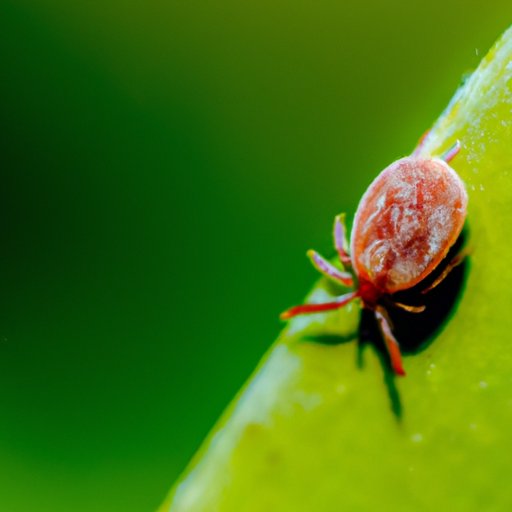
I. Introduction
Tick-borne illnesses such as Lyme disease have become increasingly prevalent in recent years, causing alarm among medical professionals and the general public alike. Lyme disease, in particular, has been a source of great concern due to its potentially devastating long-term effects on both human and animal health. As such, it is important to understand the origins of Lyme disease and the factors that have contributed to its emergence and spread. This article will explore the historical, environmental, and medical factors contributing to the emergence and spread of Lyme disease and review the current research on finding solutions to the disease.
II. Historical Account of Lyme Disease
Lyme disease was first discovered in 1975 in Lyme, Connecticut when a group of children and adults experienced identical, puzzling symptoms. These included a bull’s eye rash, fatigue, and joint pains. These early cases led to the identification of the bacteria that caused the disease, and it was named after the town of Lyme where the first cases were detected.
After the initial discovery, cases of Lyme disease started to increase in numbers across different areas of the United States and the world. By the 1980s, researchers and medical professionals were studying the disease to better understand its symptoms, transmission, and treatment.
III. Factors Contributing to the Emergence of Lyme Disease
There is a multitude of environmental and ecological factors that have contributed to the emergence of Lyme disease in recent years. Climate change and global warming have created new areas of habitat for ticks and the animals that carry the disease. Ticks also thrive in areas where forests are expanding and spreading, increasing the risk of exposure for humans and animals.
Changes in land use and the development of housing in rural areas have also increased the interaction between humans and ticks, increasing the risk of the disease. Moreover, the expansion of deer populations in suburban and rural areas has created an ideal habitat for ticks and has led to increased exposure to humans and animals.
IV. Biology of the Pathogens that Cause Lyme Disease
The bacterial pathogens that cause Lyme disease are mainly Borrelia burgdorferi and Borrelia mayonii. These bacteria are transmitted to humans and animals through the bite of infected ticks. The life cycle of the ticks influences the transmission of the disease. For example, ticks can become infected with Lyme disease when they feed on infected animals like mice or deer, and then transmit the disease to humans or other animals when they feed again.
The pathogens that cause Lyme disease can cause a variety of symptoms in humans and animals. These symptoms can range from mild to severe and can affect different organs and systems in the body. Common symptoms include fever, rash, joint pain, and fatigue. If left untreated, Lyme disease can lead to more severe and chronic symptoms such as neurological issues, heart problems, and joint inflammation.
V. Controversies Surrounding Lyme Disease
Despite the progress that has been made in the diagnosis and treatment of Lyme disease, there are still controversies surrounding the disease. Some debate exists about whether or not Lyme disease is a newer illness or has been present for centuries. Others have questioned the accuracy of current testing methods and treatments. There has also been criticism of how public health officials have responded to the spread of Lyme disease and whether or not enough has been done to prevent future cases.
VI. Current Biomedical Research into Lyme Disease
Current biomedical research into Lyme disease is focused on finding more effective approaches and new treatments. One current approach is the development of vaccines that help prevent the disease. Researchers are also exploring new drug therapies that will help improve the treatment of Lyme disease and reduce its long-term effects. There are also efforts being made to improve current testing methods and to develop new diagnostic tools that can help diagnose Lyme disease early on.
Despite the progress being made, there remain challenges and barriers to finding a cure for Lyme disease. One of the biggest hindrances is securing funding for research, development, and education initiatives to address the disease.
VII. Conclusion
Lyme disease is a serious health concern that requires continued efforts to understand its origins, spread, and treatment. By exploring the historical, ecological, and biological factors that contribute to the emergence of Lyme disease, researchers and medical professionals can better identify ways to prevent and treat the disease in the future. Additionally, there is a need for greater public awareness and prevention measures to reduce the risk of exposure, particularly in high-risk areas. This article highlights the ongoing efforts to combat this disease and encourages further research and collaboration towards finding a cure for Lyme disease.




